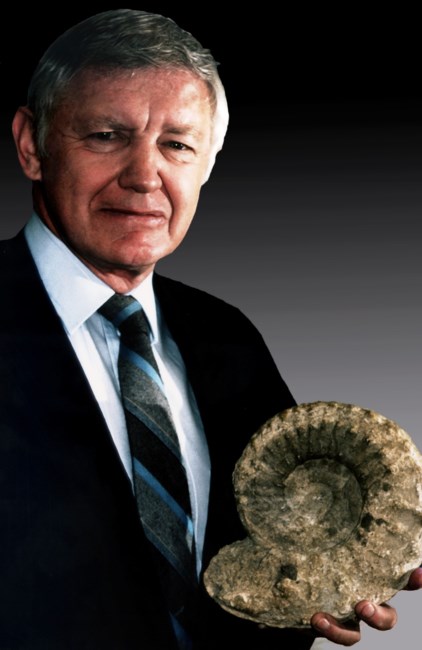Awards
- National Academies - 1984
- American Association for the Advancement of Science

Professor Emeritus Erle Kauffman taught Geobiology and Sedimentary Systems in the Department of Geological Sciences at Indiana University Bloomington. He earned his BA (1955), MS (1956) and PhD (1961) from the University of Michigan.
Professor Kauffman's research activities were subdivided equally between five spectra, all designed to give a regional picture of the distribution of communities along an environmental stress gradient during the Cretaceous: 1) In the Bivalvia and Ammonoidea, a systematic revision of the species-subspecies levels, to provide additional tools to biostratigraphy. 2) Carrying his finely tuned biostratigraphy across the border from Montana and into Canada, the north-temperate realm, to evaluate changes that can be discerned in progressively more northerly latitudes. Changes that are evident in a first test case are decrease in diversity, but increase in numbers of the taxa that remain in the relict fauna, the Inoceramidae.
Regardless of facies, whether carbonate (as is prevalent in the south) or siliciclastic (prevalent in the north) in defining the changes in background biotas, it is always toward a simpler biota in a more northerly direction, with lesser numbers of everything except Inoceramidae, and a greater mass of these bivalves. 3) In a north to south direction, there is a marked increase in diversity. From one or two zones in Tethys depending on the level of the sea; diversity peaks occurred during the late Lower Cretaceous-early Late Cretaceous, during the Upper Cretaceous (Middle part, Conacian-Santonian), and for latest Cretaceous when the diversity almost doubled among rudistids. 4) A maximum flooding surface has been dissected from middle Canada to the Caribbean; all of northern Canada is inoceramid-rich, most of the U.S.A. has a more diverse fauna, diversity increases to the south. The southernmost faunas extend to the equator (Northern Tropics) are characterized by rudists along with a diverse molluscan fauna which shows a double peak, one at the edge of the tropics and one within the tropics, marking the supertropical zone characterized by rudists. The inner two are sharply bounded, the rest are graded. 5) There are a series of faunal zones which can be correlated between ocean basins in the Cretaceous, so that truly global correlations are possible at less than a million years in magnitude.
Professor Kauffman passed away on December 16, 2016.